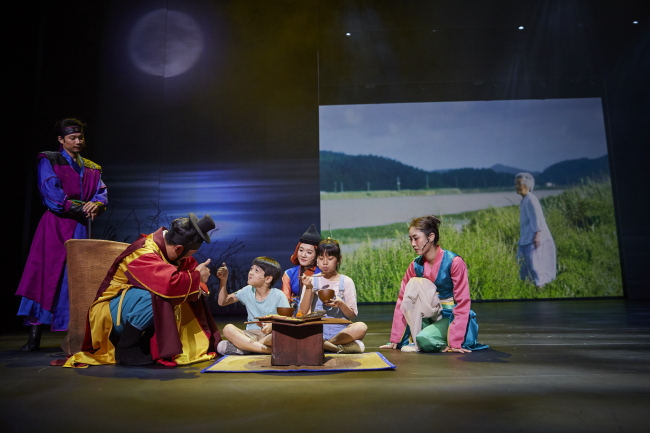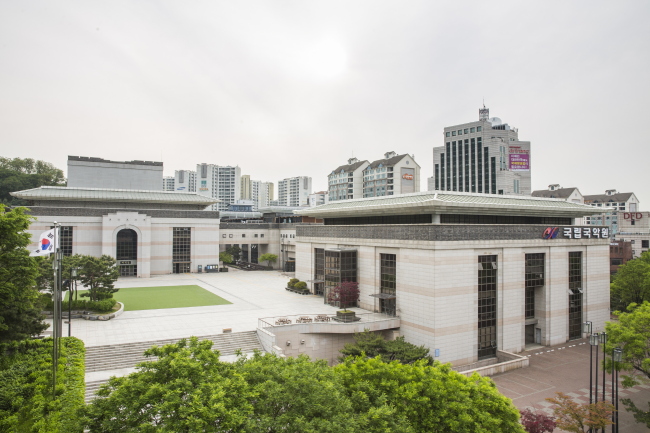National Gugak Center seeks to balance tradition, change
By Im Eun-byelPublished : March 28, 2019 - 15:08
Though Korea’s traditional music, gugak, is often neglected as pop music and Western classical music draw more attention, the National Gugak Center hopes to turn things around this year with fresh, innovative performances.
The center, designed to preserve, support and promote gugak, operates four separate units: the Court Music Orchestra, the Folk Music Group, the Dance Theater and the Contemporary Gugak Orchestra.


“Last year’s slogan was to improve the dignity of gugak while lowering the barrier. This year’s slogan is to provide a closer, deeper and more exciting (curation) of traditional Korean music,” Lim Jae-won, the center’s chief, said at a press event in central Seoul on Thursday.
“This will be a year to improve the musicality. With the four units, the NGC will work on staging good performances,” Lim said. “Also, in August, the Museum of Traditional Music will reopen after a 10-month renovation.”
The press event, which marked Lim’s first year in office, was also an occasion to introduce the artistic directors of the four units and the center’s plans for the year.
Lee Young, artistic director of the Court Music Orchestra, said, “Based on performance experience of more than 30 years, I will work on delivering the essence of traditional Korean music, preparing innovative performances through diverse changes and new interpretations.”
From July to September, the orchestra will hold a series of concerts to introduce traditional Korean music to a wider audience based on an understanding of the liberal arts. The performances will present more than just music, giving the historical backgrounds behind the music pieces.
Kim Young-gil, in charge of the Folk Music Group, noted that this year marks the troupe’s 40th anniversary.
“Based on the troupe’s major repertoires, we will create new presentations. The troupe will also try to embrace the cultures and arts of the country’s islands, such as Jeju Island and Jindo,” Kim said.
Park Sook-ja, the head of the Dance Theater, is the only woman among the four artistic directors. Originally a dancer with the troupe, she returned after some 30 years. Park said she will work on discovering a new form of court dance based on research.
“Applying new technologies, the dance performance ‘Cheoyong’ will premiere in October,” Park said. “‘Cheoyong’ is probably the only folk story with dance movements that has been passed down to our generation. The piece holds great meaning for traditional dance.”
“Cheoyong” is based on an eighth-century Korean folktale. After discovering his wife’s infidelity with the god of plagues, the title character makes the god apologize to him by singing and dancing. After that, people began to use a drawing of Cheoyong as protection against disease and evil spirits. The story inspired a traditional court dance genre called Cheoyong-mu.
The new dance piece will involve some plot changes and special visual effects to overcome the limitations of a stage performance.
Kye Sung-won, artistic director of the Contemporary Gugak Orchestra, said the troupe will put more effort into creativity and freshness.
“I will work out a creative repertoire that can only come from us,” said the composer, who also participated in the opening ceremony of the PyeongChang Olympics. “‘While other units are more about following traditions, this unit’s job is to develop something new, fresh.”
The April performance will commemorate the 100th anniversary of Korea’s independence movement. A new music piece -- a combination of court music, folk music, pansori and choir -- will be presented. In May, the troupe will collaborate on a performance with Taiwan’s traditional music orchestra.
Leading a collaboration among all four units, the National Gugak Center will hold a musical gugak performance in November. The center hopes Lee Jong-seok’s production -- inspired by a folktale from a region in North Korea -- will attract a wide audience.
By Im Eun-byel (silverstar@heraldcorp.com)








![[Graphic News] More Koreans say they plan long-distance trips this year](http://res.heraldm.com/phpwas/restmb_idxmake.php?idx=644&simg=/content/image/2024/04/17/20240417050828_0.gif&u=)
![[KH Explains] Hyundai's full hybrid edge to pay off amid slow transition to pure EVs](http://res.heraldm.com/phpwas/restmb_idxmake.php?idx=644&simg=/content/image/2024/04/18/20240418050645_0.jpg&u=20240419100350)






![[From the Scene] Monks, Buddhists hail return of remains of Buddhas](http://res.heraldm.com/phpwas/restmb_idxmake.php?idx=652&simg=/content/image/2024/04/19/20240419050617_0.jpg&u=20240419175937)

![[KH Explains] Hyundai's full hybrid edge to pay off amid slow transition to pure EVs](http://res.heraldm.com/phpwas/restmb_idxmake.php?idx=652&simg=/content/image/2024/04/18/20240418050645_0.jpg&u=20240419100350)

![[Today’s K-pop] Illit drops debut single remix](http://res.heraldm.com/phpwas/restmb_idxmake.php?idx=642&simg=/content/image/2024/04/19/20240419050612_0.jpg&u=)